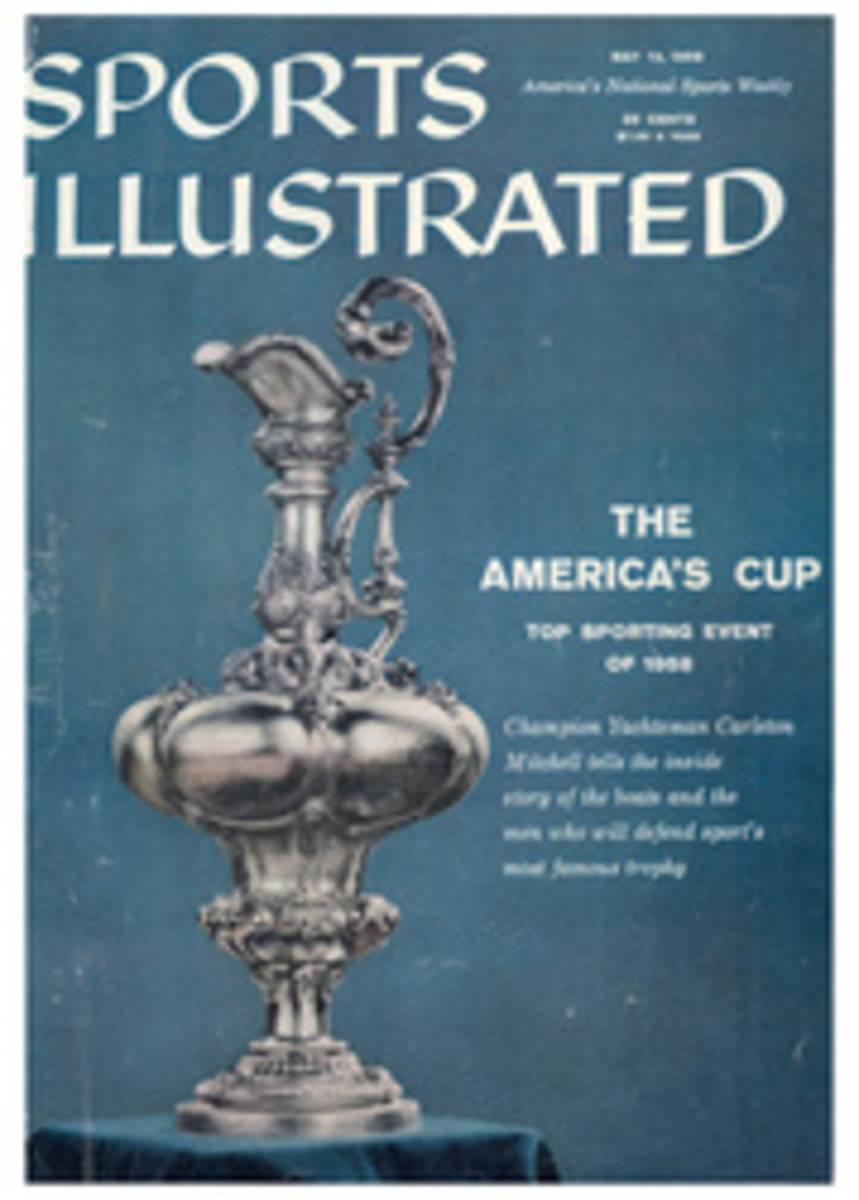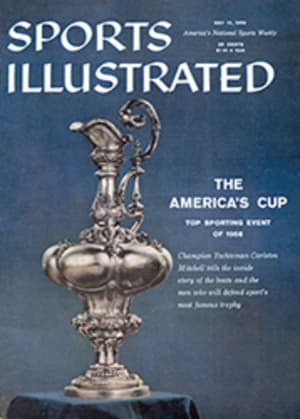
The links of 37 nations
The placards that rimmed a long, green conference table in Washington last week carried legends that read: Pierre Abbeloos, Belgium; Dr. Eduardo Maglione, Argentina; Douglas Whyte, New Zealand; Chen Yih, China; Henry H. Turcan, Great Britain; and so on. Thirty-seven in all, including the United States. But this was not the usual moody conclave of somber-faced diplomats, currently such a common sight in the nation's harried capital. The table was in the pastel-curtained Caribar Room of the Sheraton Park Hotel and the delegates were decked out in delighted smiles and emblemed blazers. They had gathered to establish a World Amateur Golf Council and make final arrangements for the first world amateur championship, to be held at St. Andrews, Scotland next October 8 to 11. Last week it was perhaps the most congenial and successful conference being held anywhere in the world.
Working with agreeable swiftness, the delegates named a nine-man administrative council, headed by John D. Ames, president of the USGA, and Great Britain's Turcan, and ratified a format for the world tournament. It will be a four-day, 72-hole, medal-play, team affair. Each country entering (and there should be well over 30 of them by autumn) will send a squad of four golfers to compete. The scoring system is unique; all four golfers on each team will play daily, but only the team's three best rounds each day will count toward the final score. At the end of four days these daily aggregates will be added together and the country with the lowest total will have won the championship and the Eisenhower Trophy that goes with it. The championship will be held every other year, rotating among the European-African, American and Australasian geographic zones.
Incredibly, the first move to found this all-inclusive event was made only last January at the USGA's annual meeting in Chicago. It was strongly felt that the time was eminently ripe for such a plan, and golf's two ruling bodies, the USGA and the Royal and Ancient Golf Club of Scotland, met behind closed doors last March (SI, April 7), emerging with a very workable scheme. Invitations were then fired off to the golf organizations of 49 countries, suggesting that they send representatives to a constitutional convention in Washington. That delegates from 37 nations, on such short notice, scampered into town last week is a powerful indication of just how ripe the time was.
At noon on the first day of meetings, Friday, May 2, the conferees arose from the long, green table, scrambled into their blazers and trooped over to the Rose Garden at the White House to meet the world's most famous golfer, a 16-handicap player named Dwight D. Eisenhower. While the flag on the pin in his private putting green nearby flapped gently, the President of the United States praised the large measure of international good will that would surely spring from this imaginative competition, then quietly dropped a mischievous bombshell into the well-pressed laps of the delegation.
"I suggest, that aside from the four hot-shot golfers that you bring with you," said President Eisenhower, "that you take along some high handicap fellows and let them play at their full handicaps. This way you never have to take back the same man, and besides golf doesn't become so important.
"You see," Eisenhower continued, "after a match the scratch fellow remembers one thing...and tells all his friends for the rest of his life that he could have won that international match if he hadn't hit the ball into the water on the 16th. But the high handicappers, they know darn well there's no use telling their families or their friends about their golf, so they will tell more about St. Andrews, and about the wonderful Scot people, and everybody they met there."
It was a refreshing idea, not only to the duffers at whom he directed his remarks, but no doubt to duffers all over the world.
Though nothing official came of Eisenhower's suggestion when the conference reconvened, it seems that there will be a few relative duffers on hand as a matter of necessity. China's Chen Yih, a 4-handicap golfer, voiced the position of many delegates when he said: "Golf is a new game to us, so we won't be bringing a very good team to Scotland. Duffers like me will go, but we'll enjoy the game and the scenery."
After the final meeting had been adjourned, a dozen delegates rushed off into the wet, muggy afternoon to get in a quick round of golf before dark, and others remained behind to chat enthusiastically about what they had just accomplished. In two short days the representatives of countries harboring some 15 million golfers and 10,000 golf courses had set in motion a world organization. Dr. Maglione, the Argentine, clad nattily in a green-gray suit and a dark tie adorned with crossed golf clubs, sipped a very dry Martini and concluded:
"Of all human beings, golfers usually arrive at a decision with the most difficulty...but look at what all of us confused golfers have done."
PHOTO
GATHERED ON THE WHITE HOUSE LAWN, President Eisenhower and John D. Ames (just to the President's right), USGA president and co-chairman of the newly formed administrative body of the World Amateur Golf Council, share some good-humored moments with conference delegates and members of the press. Eisenhower delighted his international audience with the suggestion that they try to work out a plan whereby golfing duffers can compete in next October's world amateur championship.

